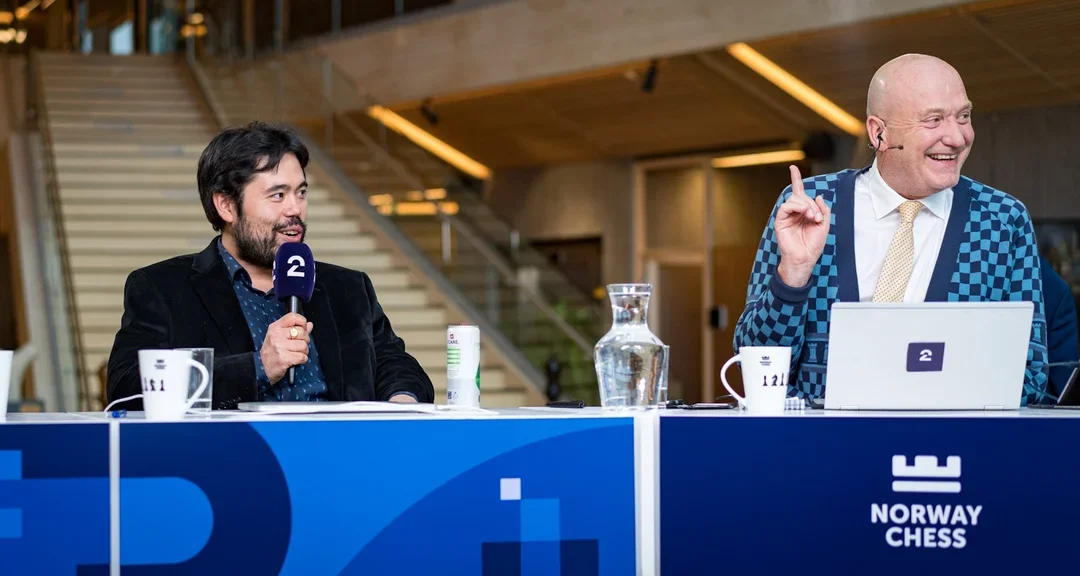
Headed into the last round of the 2023 Norway Chess tournament, held May 29 through June 9, White had to “win on demand” if he wanted to overtake his opponent in the standings. The situation was a familiar one for GM Hikaru Nakamura, who found himself with the black pieces in the 2022 Candidates Tournament against GM Ding Liren. We all know how that went.
But in Stavanger, Nakamura was chasing GM Fabiano Caruana, who had led the tournament from his first-round win over GM Magnus Carlsen and never looked back. A win, however, would still be enough for Nakamura to overtake Caruana by half-a-point in the modified scoring system. If anybody knew from experience that such a tall order was not as impossible as it might appear, it was certainly Nakamura.
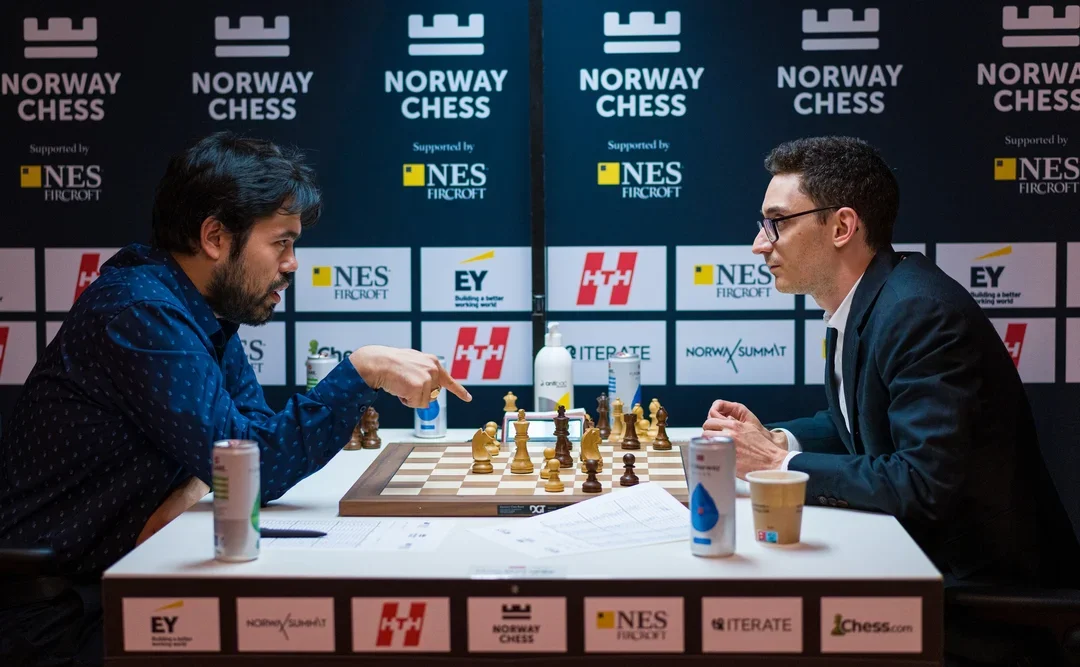
Essaying the variation of the Two Knights Defense sometimes colloquially (but incorrectly) referred to as ‘The Fried Liver,’ Nakamura managed to do what needed to be done. With his win, he finished clear first in Norway Chess with a score of 16½/27 ahead of Caruana (16/27) and Gukesh D (14½/27). Carlsen (11½/27) finished winless in a classical tournament for the first time in sixteen years, while both Nakamura and Caruana overtook Ding in the standings to move up to second and third, respectively.
The nine-round Round Robin was primarily a classical tournament, with 120 minutes for the game and a ten-second increment in effect beginning after move 40. But wins would count for three points, rather than one, and draws would count for only one point. This scoring system should be familiar to fans of international soccer, with the idea of promoting fighting play by making a draw only “a third as good as” a win rather than half as good.
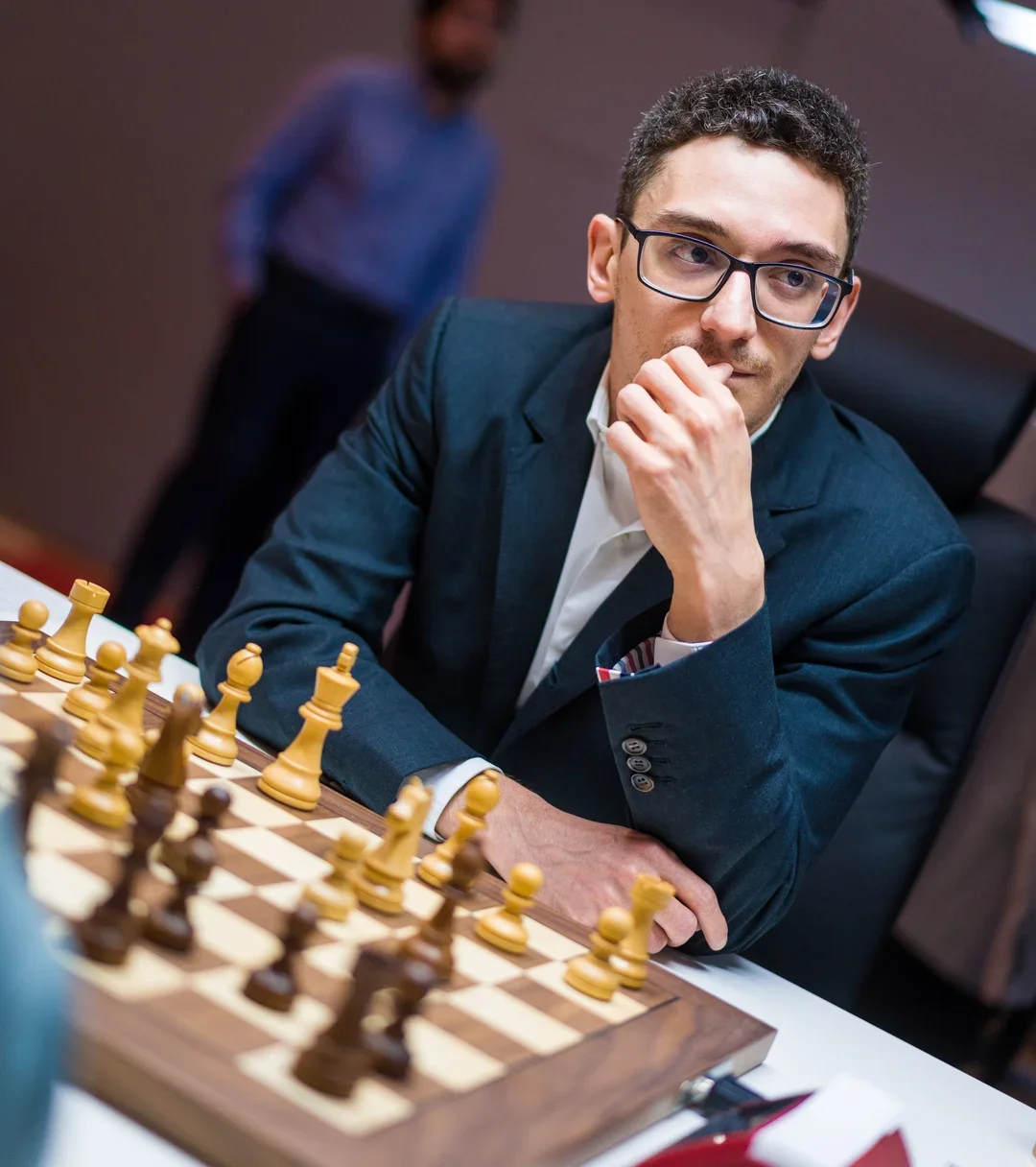
Another nuance, however, is that after each drawn game was to follow an Armageddon blitz match, with the winner earning an additional half-point (out of three). To put things in perspective, this means that a player who won all their Armageddon games would have the same score (proportionally, that is) according to this system as they would according to the traditional system. But each Armageddon loss would slightly reduce the player’s overall score, compared to earning an entire half-point (or one-and-a-half points) from the draw in the traditional system.
This scoring system appeared to be a success, with Nakamura finishing “plus-three” with three wins, zero losses, and six draws (winning half of his Armageddon games). Caruana finished “plus-two” with four wins, two losses, and three draws (winning two of his Armageddon games).
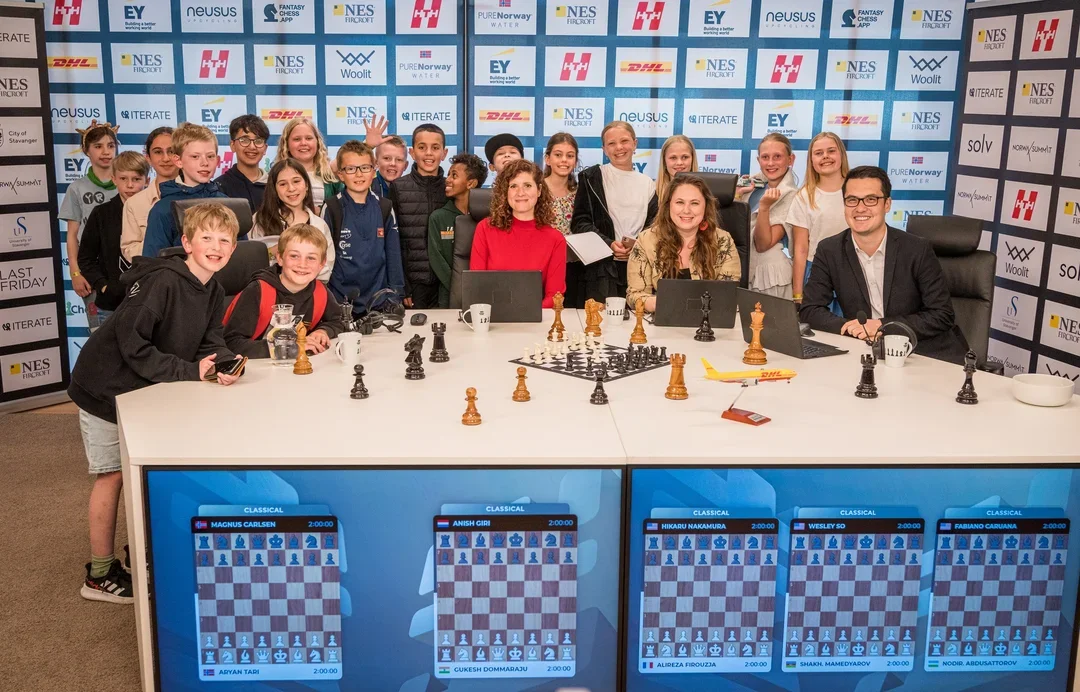
In other words, the player who would have won under the old system won under the new system. But! Had Caruana not lost his Armageddon game against Gukesh on time in a winning position, that additional half-point would he would have tied Nakamura for first with 16½/27. And there would be some argument to be made that a player winning all three of his Armageddon games deserved that extra bump compared to the player who won only half of his Armageddon games (which are covered beginning in the tenth chapter of this study).
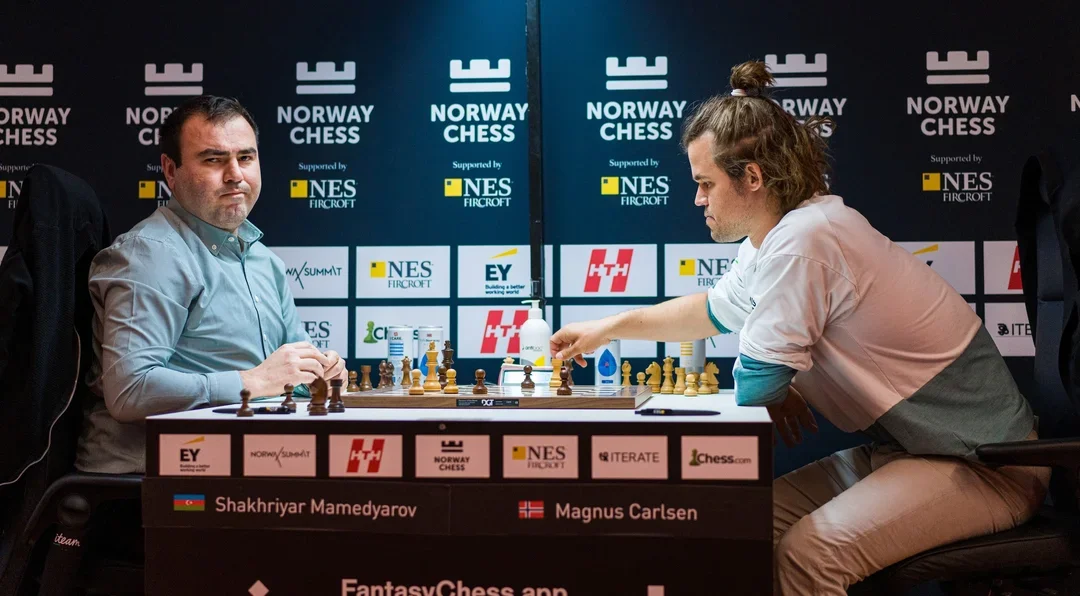
In other words, the modified scoring provided some additional background suspense, but not at the expense of totally reshaping the value of winning (and not losing) the classical game. It also provided some silver lining for players with disappointing classical results, such as Carlsen, who could at least boast a staggering seven Armageddon victories out of his eight games, losing only to GM Aryan Tari in the final blitz game.
Normally, some of the game highlights would be embedded into the above story. But the drama in the standings and complications in the scoring system did not need to be interrupted, especially considering just how many remarkable games Caruana and Nakamura played in this event. So, without further ado, let’s move on to the chess highlights.
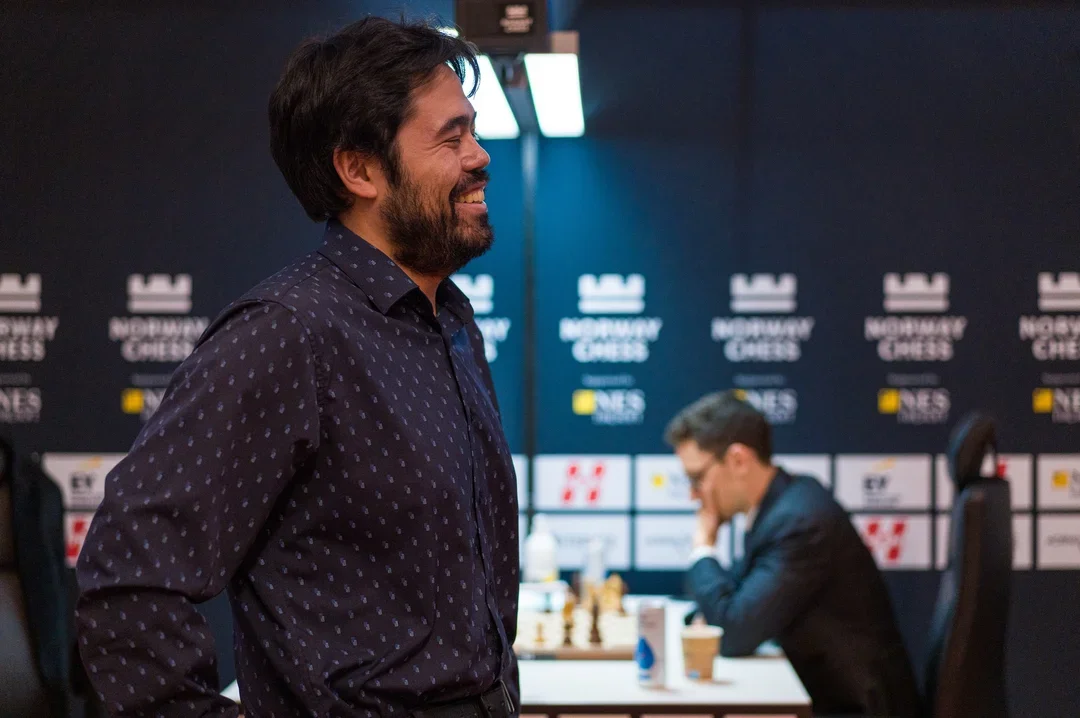
In his first game, Caruana played about a typical Caruana game as one could ask for: controlling the center, not taking on any unnecessary risk, and executing a crystal-clear plan with the f4-f5 break and ensuing domination of the opponent’s kingside. The only twist was that his opponent was none other than Carlsen, who seemed uncharacteristically impatient in the French torture device of his own making.
The second round eventually proved crucial for the final standings. Caruana drew Giri an uneventful game, and then won the Armageddon in a nice fashion that illustrated how far his blitz chess has come in recent years. Nakamura, coming off a surprising Armageddon loss to GM Wesley So, bounced back by winning with the black pieces against Gukesh.
This would prove to be Nakamura’s last decisive game until the final round. Caruana, in contrast, returned to his winning ways the next day with a very modern handling of Tari’s Exchange Queen’s Gambit Declined:
The tournament began echoing the 2014 Sinquefield Cup when Caruana won his third game in round four against GM Alireza Firouzja. Playing the same French that got Carlsen into hot water earlier that week, Caruana simply achieved a better position out of the opening and took control from there.
The turning point came in round five, as Azeri grandmaster Shakhriyar Mamedyarov brought Caruana down to earth. In an imbalanced position, Caruana began to drift in the complications. He clawed his way back, but not before the time control took another casualty.
Caruana bounced right back, defeating GM Nodirbek Abdusattorov on the black side of a Ruy Lopez to cement his tournament lead.
But after two uneventful draws — including the aforementioned Armageddon loss to Gukesh and an Armageddon win against So —Nakamura remained within striking distance. Catching Caruana off guard with his choice of openings, he was able to quickly seize control of the center, and the game (and the tournament).
Congratulations to Nakamura on a great finish to a strong event, and to Caruana for his multiple statement victories.
Two side events are also worth mentioning. First, the day before the classical tournament began, the players competed in a Round Robin blitz event. Abdusattorov took the lead late, winning with a 6/9 score half a point ahead of Firouzja and Mamedyarov. The scores were used to determine the pairing order of the classical tournament.
Equally importantly, one of the rest days saw the players compete in a competition to design sweaters.
The struggle is real 😅🧶 Players are divided to five teams of two plus one @tv2sport team and they have to design a knittable sweater! Which team do you think will win? #NorwayChessGames pic.twitter.com/o1YP8BkLVx
— Norway Chess (@NorwayChess) June 2, 2023
With more than 2,000 votes cast, Gukesh and So earned the victory despite protests from Giri.
“Where can we protest?!” 😂
— Norway Chess (@NorwayChess) June 10, 2023
People have voted:
🥇 @DGukesh and @GMWesleySo123
🥈 @GMHikaru and @MagnusCarlsen
🥉 @anishgiri and @NodirbekGM
Thank you all for participating!! More than 2,000 votes in just five days 🥳 If you want your personalised sweater, check @woolit2 🧶 pic.twitter.com/aWj6GOkqAn
Categories
Archives
- December 2025 (25)
- November 2025 (29)
- October 2025 (39)
- September 2025 (27)
- August 2025 (29)
- July 2025 (43)
- June 2025 (25)
- May 2025 (24)
- April 2025 (29)
- March 2025 (29)
- February 2025 (20)
- January 2025 (24)
- December 2024 (34)
- November 2024 (18)
- October 2024 (35)
- September 2024 (23)
- August 2024 (27)
- July 2024 (44)
- June 2024 (27)
- May 2024 (31)
- April 2024 (51)
- March 2024 (34)
- February 2024 (25)
- January 2024 (26)
- December 2023 (29)
- November 2023 (26)
- October 2023 (37)
- September 2023 (27)
- August 2023 (37)
- July 2023 (47)
- June 2023 (33)
- May 2023 (37)
- April 2023 (45)
- March 2023 (37)
- February 2023 (28)
- January 2023 (31)
- December 2022 (23)
- November 2022 (32)
- October 2022 (31)
- September 2022 (19)
- August 2022 (39)
- July 2022 (32)
- June 2022 (35)
- May 2022 (21)
- April 2022 (31)
- March 2022 (33)
- February 2022 (21)
- January 2022 (27)
- December 2021 (36)
- November 2021 (34)
- October 2021 (25)
- September 2021 (25)
- August 2021 (41)
- July 2021 (36)
- June 2021 (29)
- May 2021 (29)
- April 2021 (31)
- March 2021 (33)
- February 2021 (28)
- January 2021 (29)
- December 2020 (38)
- November 2020 (40)
- October 2020 (41)
- September 2020 (35)
- August 2020 (38)
- July 2020 (36)
- June 2020 (46)
- May 2020 (42)
- April 2020 (37)
- March 2020 (60)
- February 2020 (38)
- January 2020 (45)
- December 2019 (34)
- November 2019 (35)
- October 2019 (42)
- September 2019 (45)
- August 2019 (56)
- July 2019 (44)
- June 2019 (35)
- May 2019 (40)
- April 2019 (48)
- March 2019 (61)
- February 2019 (39)
- January 2019 (30)
- December 2018 (29)
- November 2018 (51)
- October 2018 (45)
- September 2018 (29)
- August 2018 (49)
- July 2018 (35)
- June 2018 (31)
- May 2018 (39)
- April 2018 (31)
- March 2018 (26)
- February 2018 (33)
- January 2018 (30)
- December 2017 (26)
- November 2017 (24)
- October 2017 (30)
- September 2017 (30)
- August 2017 (31)
- July 2017 (28)
- June 2017 (32)
- May 2017 (26)
- April 2017 (37)
- March 2017 (28)
- February 2017 (30)
- January 2017 (27)
- December 2016 (29)
- November 2016 (24)
- October 2016 (32)
- September 2016 (31)
- August 2016 (27)
- July 2016 (24)
- June 2016 (26)
- May 2016 (19)
- April 2016 (30)
- March 2016 (36)
- February 2016 (28)
- January 2016 (32)
- December 2015 (26)
- November 2015 (23)
- October 2015 (16)
- September 2015 (28)
- August 2015 (28)
- July 2015 (6)
- June 2015 (1)
- May 2015 (2)
- April 2015 (1)
- February 2015 (3)
- January 2015 (1)
- December 2014 (1)
- July 2010 (1)
- October 1991 (1)
- August 1989 (1)
- January 1988 (1)
- December 1983 (1)







